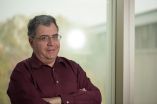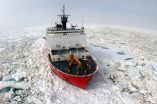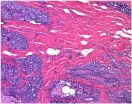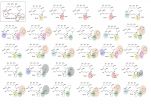'Smart windows' have potential to keep heat out and save energy
2014-12-10
(Press-News.org) Windows allow brilliant natural light to stream into homes and buildings. Along with light comes heat that, in warm weather, we often counter with energy-consuming air conditioning. Now scientists are developing a new kind of "smart window" that can block out heat when the outside temperatures rise. The advance, reported in ACS' journal Industrial & Engineering Chemistry Research, could one day help consumers better conserve energy on hot days and reduce electric bills.
Xuhong Guo, Kaimin Chen, Yanfeng Gao and colleagues explain that researchers are pursuing smart windows that can respond to a variety of cues, including electricity, gas, light and heat. Those that are sensitive to heat are particularly useful for cutting down on energy use -- when it gets hot outside, the windows turn an opaque white to block unwanted heat from entering a building while still allowing light to pass. They become transparent again as temperatures drop. But current methods for making these windows use jelly-like materials called hydrogels that swell in the heat, which hurts performance. Guo's and Gao's teams wanted to address this flaw.
Building on previous advances, the researchers made a version of the hydrogels, but in the form of microscopic soft beads suspended in a liquid. They sandwiched the solution between two pieces of glass and tested it using a model house. When they shined a lamp mimicking solar light on the smart window, it turned opaque and kept the inside of the house cool. The microgel, however, didn't swell as much as its predecessor. The researchers conclude that their new microgel is a good candidate for use in future smart windows.
INFORMATION:
The authors acknowledge funding from the National Natural Science Foundation of China, the Fundamental Research Funds for the Central Universities, the Higher School Specialized Research Fund and 111 Project Grant.
The American Chemical Society is a nonprofit organization chartered by the U.S. Congress. With more than 163,000 members, ACS is the world's largest scientific society and a global leader in providing access to chemistry-related research through its multiple databases, peer-reviewed journals and scientific conferences. Its main offices are in Washington, D.C., and Columbus, Ohio.
To automatically receive news releases from the American Chemical Society, contact newsroom@acs.org.
Follow us: Twitter Facebook END
ELSE PRESS RELEASES FROM THIS DATE:
2014-12-10
HOUSTON - (Dec. 10, 2014) - Like a baseball player sliding into third, a hot monomer skids in a straight line along a cold surface until it's safely among its fellow molecules.
This is not what usually happens when scientists assemble monomers to make thin films for next-generation electronics, but the details remained a puzzle until a team led by Rice University got involved. Monomers are organic molecules that, in this application, form clusters and eventually complete layers.
Researchers at Rice and the University of Maryland led by Rice theoretical physicist ...
2014-12-10
A Danish Research Team identified a molecular mechanism that ensures that when cells divide, the genomic material passes correctly to the resulting daughter cells:
"The process, known as chromosome segregation, is vitally important because incorrect passage of the genomic material makes cells prone to develop into cancer cells," says Jakob Nilsson, associate professor at the Novo Nordisk Foundation Center for Protein Research.
The new discovery depends on a protein called BubR1 which if mutated can cause cancer.
The results have just been published in the scientific ...
2014-12-10
The Ebola virus travels from person to person through direct contact with infected body fluids. But how long can the virus survive on glass surfaces or countertops? How long can it live in wastewater when liquid wastes from a patient end up in the sewage system? In an article published Dec. 9 in the journal Environmental Science & Technology Letters, Kyle Bibby of the University of Pittsburgh reviews the latest research to find answers to these questions.
He and his co-investigators didn't find many answers.
"The World Health Organization has been saying you can put ...
2014-12-10
A team of researchers from the Cockrell School of Engineering at The University of Texas at Austin and environmental testing firm URS reports that a small subset of natural gas wells are responsible for the majority of methane emissions from two major sources -- liquid unloadings and pneumatic controller equipment -- at natural gas production sites.
With natural gas production in the United States expected to continue to increase during the next few decades, there is a need for a better understanding of methane emissions during natural gas production. The study team ...
2014-12-10
A happy worker is a productive worker. That adage may be true, according to a new study from The University of Texas at Dallas.
Two UT Dallas public affairs researchers found that family-friendly policies are beneficial for increasing productivity of employees in public organizations, and the authors said the finding likely lends itself to job satisfaction and commitment.
The study, published in the Public Personnel Management, investigated the effects of family-friendly human resources policies in public organizations. Using the Korea Workplace Panel Survey data from ...
2014-12-10
New school and office workspace designs created by a group of Penn State engineering students are intended to allow users to share space and materials while maintaining their own work areas -- a dual purpose the researchers say has been neglected.
The research began in 2010 as a class project, according to Joseph M. Mahoney, former Penn State graduate student, now assistant professor of mechanical engineering, Penn State, Berks. "There's a lot of interest from an ergonomics perspective and workplace efficiency perspective of designing workstations for single users," Mahoney ...
2014-12-10
In the depths of the Arctic Ocean, buried deep in the sediment, an ancient creature waited for over a million years to be discovered. Paul Valentich-Scott, from the Santa Barbara Museum of Natural History (California), and three scientists from the United States Geological Survey (USGS, Menlo Park, California), Charles L. Powell, Brian D. Edwards, and Thomas D. Lorenson were up to the challenge. Each with different expertise, they were able to collect, analyze, and identify a new genus and new species of bivalve mollusk.
The path to discovery is seldom simple or easy. ...
2014-12-10
Breast cancer is the most common in women. One in nine will suffer breast cancer over their lifetime. Progress in prevention and early detection, and the use of chemotherapy after surgery (adjuvant chemotherapy), have achieved significantly increase survival in this disease in the last ten years, but much remains to be done.
The identification of patients with high-risk breast cancer is key to knowing whether a patient will require only the removal of the tumor by surgery or whether if she will need additional chemotherapy to make sure the removal of breast cancer cells. ...
2014-12-10
Malaria is one of the most serious health problems worldwide, registering 200 million clinical cases and more than 600,000 attributable deaths per year, according to information from the World Health Organization in 2013. Given the emerging resistance to the standard treatment most widely used throughout the world, which is based on artemisinin and its analogs, there is a need for new antimalarial compounds.
In this regard, scientists headed by Lluís Ribas de Pouplana, ICREA researcher at the Institute for Research in Biomedicine (IRB Barcelona), report on a new ...
2014-12-10
This news release is available in German. FRANKFURT. Frankfurt physicists have once again contributed to resolving a disputed matter of theoretical physics. Science has long since known that, contrary to the old school of thought, helium forms molecules of two, three or even more atoms. Exactly what helium consisting of three atoms looks like, however, has been disputed by theoretical physicists for about 20 years. Besides the intuitive assumption that the three identical components form an equilateral triangle, there was also the hypothesis that the three atoms are ...
LAST 30 PRESS RELEASES:
[Press-News.org] 'Smart windows' have potential to keep heat out and save energy




